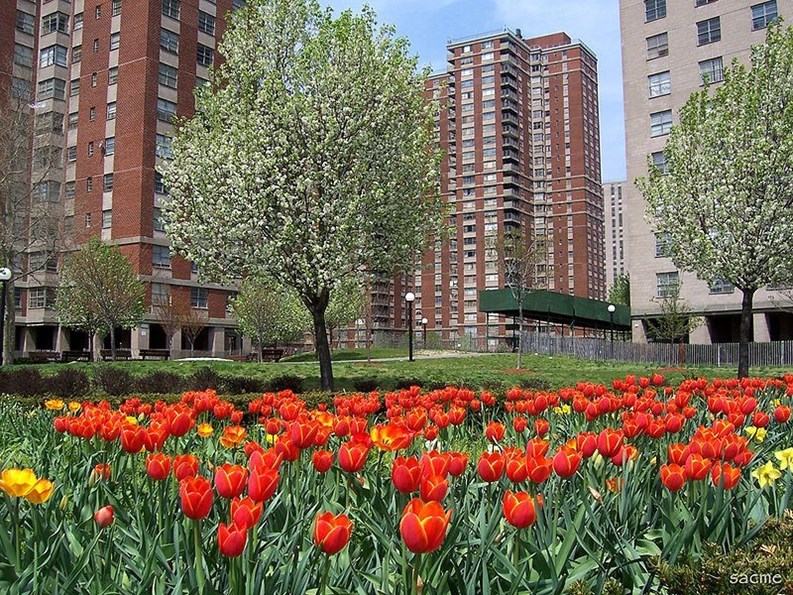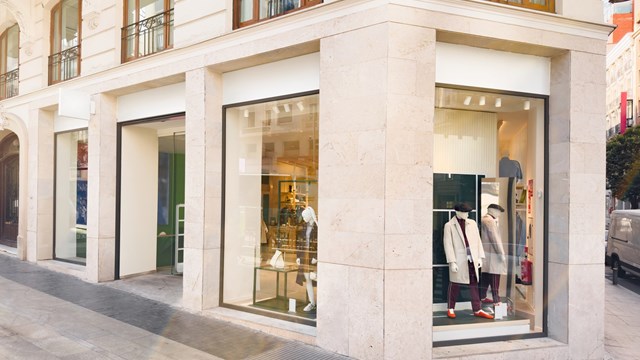“So you think hip-hop had its start out in Queensbridge?”
According to seminal rap artist and South Bronx native KRS-One, you are mistaken. In fact, according to his aptly titled 1986 track, “If you popped that junk up in the Bronx, you might not live.”
KRS-One and rival Queensbridge-based rapper Marley Marl fought over the question of where hip-hop was born for the better part of a decade. The two hip-hop pioneers never came to a consensus, but the feud reminded music fans that the South Bronx, more than a forgotten and violence-prone outpost in New York City, was a hotspot for creativity—so much so that the neighborhood nearly single-handedly changed the direction of music.
Today, with numerous redevelopment projects, especially in developing areas like the Grand Concourse, the neighborhood’s appeal to the co-op and condominium communities is on the rise.
Named After the River
Originally the territory of the Lenape Native Americans, the Bronx was settled by Dutchman Jonas Bronck in 1639. Bronck traveled up the East River in his ship The Fire of Troy and settled on 500 acres across from the Harlem River, according to Lisa Garrison’s The South Bronx and the Founding of America. Consequently, the river that ran parallel to the Harlem became known as Bronck’s River, and the community that grew around it was later dubbed “The Bronx.”
Four centuries later, the “cks” was exchanged for an “x,” and the Bronx became the unofficial “Jewish Borough.” By the 1930s, the area south of Fordham Road, known as the South Bronx, was populated by more than 300,000 Jewish residents, amounting to about 57 percent of the city’s Jewish population.
The post World War II period spurred numerous housing and neighborhood redevelopment projects in the Bronx, stimulating both intra- and inter-borough migration. The housing-scape was altered with the development of luxury apartment buildings in the Riverdale area of the northwest Bronx, the Co-op City highrise buildings in the northeastern and public housing in the south. Longtime residents moved from the South Bronx neighborhoods to the new north Bronx developments and other boroughs. The South Bronx vacancies were filled by minorities displaced by a number of Manhattan’s urban renewal projects.
Many families relocated also to suburban areas to avoid policies requiring the busing of school children in the late 1960s. According to Wendell Cox, principal of Wendell Cox Consultancy—a firm specializing in public policy and demographics, “The whole mandatory ‘busing thing’ was by no means adjudicated on a consistent basis. Ultimately it became a school board issue. As de facto segregation existed in the city, families moved to suburban areas where the racial imbalance would not present an opportunity for busing.” Eventually, the mass exodus lead to a vacancy crisis in the South Bronx. “It was impossible to find an apartment in areas like New Jersey in ‘69 because of the out-migration of New Yorkers,” says Cox.
With the increase of new tenants occupancies, landlords grew resentful of rent control stipulations and refrained from financing repair projects to aged buildings. According to the Bronx County Historical Society, “Buildings were often set afire, at unscrupulous landlords to collect insurance, or by unscrupulous tenants taking advantage of the city’s policies for priority public housing and new furnishings for fire victims.” The torching subsided once limitations on insurance claims were enforced. In the subsequent decades several buildings were restored, many were converted into cooperative and condominium developments and some single-family homes were built onto vacant lots.
However, it remained difficult to escape the poverty, which materialized in the 1960’s South Bronx. By the mid 1980s, the crack epidemic had scorched through the South Bronx, leaving the neighborhood a synonym for urban decay. According to New York City Police Department (NYPD) officers from the 41st Precinct in Hunts Point, the war on drugs was “lost on the battlefield of the South Bronx streets,” the New York Times reported on September 8, 1989. Crack houses and their habitues had overrun the area, and residents who weren’t using or trafficking felt trapped by the industry that thrived all around them. “When I came here in 1989, gunfights in the street were a fairly regular occurrence,” says John Sanchez, director of the East Side House Settlement in Mott Haven.
The Face of a Neighborhood
Today’s South Bronx has its share of challenges and social issues, but it’s also home to a vibrant, hardworking, mixed population. The mix of cultures is reflected broadly in the dining options and the music heard from the street. Restaurants, now more than ever, include Mexican taquerias and Dominican establishments serving island staples like mangu, a plantain-based dish.
But the South Bronx is also home to an eclectic blend of young, single, professionals and artists, too. The area of Bruckner Boulevard in Mott Haven sprouted a small arts community as high real estate prices have displaced Brooklyn and Manhattan creative types looking for cheaper rents. The Haven Arts Gallery in Mott Haven, set in a nondescript building, hosts visual art, dance and performance. The Gallery Lounge, also on Bruckner Boulevard, is an early sign of how Manhattan’s cosmopolitan niceties may follow young artists to the neighborhood.
Hunts Point has also had the starlet fortune of crossing paths with the glitz and glam of Broadway, Fifth Avenue and Hollywood. Since the March 2, 2007, opening of LightBox-NY film and photography studio, in Hunts Point’s Bank Note complex, the studio has hosted photo-shoots for Bergdorf Goodman, Bloomingdales, French Vogue, Mikhail Baryshnikov’s American Ballet Theater for Italian Vogue, and several photo and music video and film projects with artists such Gwyneth Paltrow, Anne Hathaway and Robert Redford.
Yankee Stadium is the South Bronx’s most famous landmark at East 161st Street and River Avenue. The stadium hosted the New York Yankees from 1923 to 2008, during which time the home team clinched nine World Series. The stadium also witnessed the triumph of Muhammad Ali over Ken Norton in 1976, numerous football games and concerts, and masses led by Pope Paul VI, Pope John Paul II and Pope Benedict XVI..
On September 21, 2008, the Yankees beat the Baltimore Orioles 7-3 in the final game played at the 85-year-old ballpark. Then a new Yankee Stadium, in the lot adjacent to the former stadium, celebrated its opening day on April 16, 2009. According to the official Yankees website, the project totaled $1.5 billion, making it the second most expensive stadium in the world after Wembley Stadium in London.
Housing
There are co-ops and condos dotting the area, but the majority of housing in the South Bronx is government-subsidized, according to Peter Cantillo, president of the Southeast Bronx Community Organization, a development and building management company.
“Just about everything here has been subsidized, mostly with tax credit programs,” he says. “I think Section 8 rents and market rents are about the same—about $1,300 for a two-bedroom apartment is what the market will bear here.” And while Cantillo does not believe the South Bronx is in a position where market-rate development can occur, other sources report that the South Bronx is the next target for planned redevelopment for families priced out of Manhattan.
The majority of development in the area is for two-bedroom rentals, Cantillo continues, adding that the number of homeowners in the area increased, as working, middle-class families moved into the area. Low-rise walk-ups—usually brownstone row homes—are common throughout the South Bronx.
The Grand Boulevard and Concourse, known simply as the Grand Concourse, has begun to undergo major restoration intended to revitalize its Art Deco and Art Moderne architecture, some of which is listed on the National Register of Historic Places. As a result, the area now has the greatest number of market rate co-ops and condos in the South Bronx, according to Cantillo.
The buildings “went through a period of decay in the ‘70s and ‘80s, and then were restored individually,” Cantillo says. Two bedroom units sell for between $200,000 and $300,000. Executive Towers, located between East 164th Street and East 165th Street, is currently the “premier” co-op building in the South Bronx. The white brick towers have studios, one-, two-, and three-bedroom units—an example of things to come as the New York City Department of City Planning (DCP) seeks to revitalize the area around the new Yankee Stadium.
What Does the Future Hold?
With the prospects of city rezoning for efficient land use, the area seems primed for economic development. “There are plenty of opportunities if you’re in the business of subsidized programs,” Cantillo says of new residential development in the South Bronx.
While Mott Haven remains part of one of the most marginalized districts in the country, personal crime in the community is down and the quality of education is on the rise across the South Bronx, according to Sanchez, who is also a member of Mayor Bloomberg’s Commission on Economic Opportunity.
“You don’t see that kind of violence anymore,” Sanchez said. “Schools are operating with more transparency, and achievement and test scores are going up.”
Organizations like Sanchez’s have helped revitalize the community and immigrant populations that settle the area. The New York City Teaching Fellows program is also active in the South Bronx, where approximately one-third of their highly qualified fellows teach. Teaching positions through the program are highly selective, and applicants often come from the country’s top universities.
While the South Bronx has yet to be declared a hotspot for residential development and co-op and condo living, it’s clear that it’s a neighborhood is looking toward a brighter future. The foundation is there—after all, a neighborhood capable of launching hip-hop music and 26 World Series-winning and 39 pennant-winning baseball teams must know a little something about success.
Jonathan Levin is a freelance writer and a frequent contributor to The Cooperator. Melissa Swinea also contributed to this article.







Leave a Comment